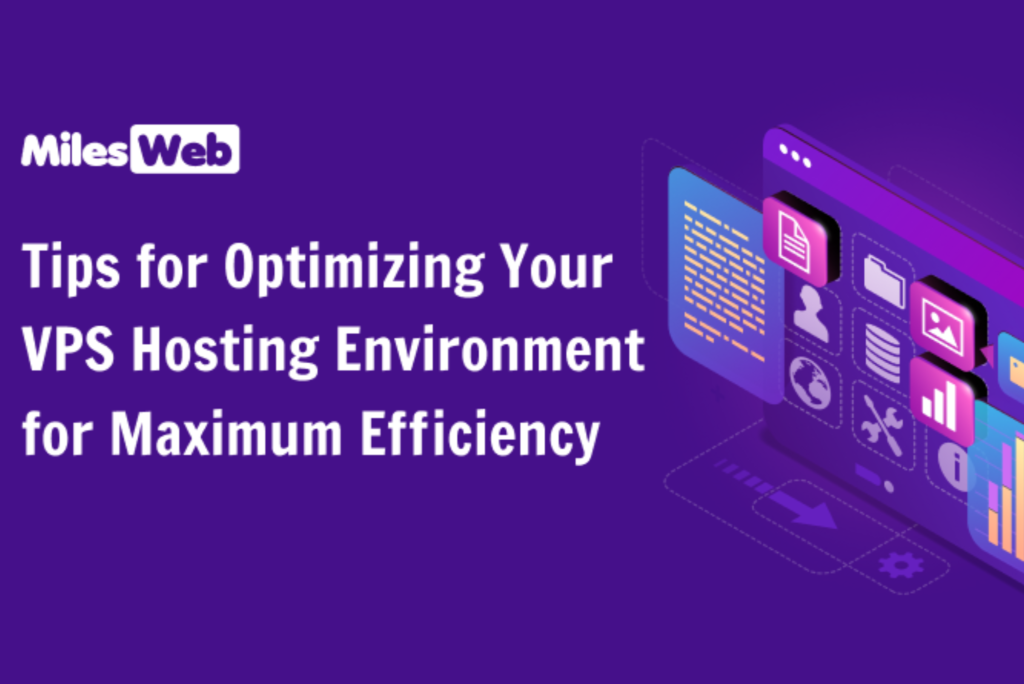Virtual Private Servers (VPS) are strong in-between options when it comes to web hosting, neither as expensive as purchasing a whole server nor as insecure as shared web hosting services. This means that although VPS gives you full control over your server environment, it’s cheaper than buying one outright. Additionally, low cost VPS hosting services, including cheap Windows VPS options, offer viable solutions for various budget ranges.
Nonetheless, remember that even this type of server still needs optimization techniques for better performance. Welcome to this blog post where we shall try to uncover some vital must-follow directives that may aid you in optimizing your Virtual Private Server (VPS) for peak efficiency.
Choosing the Right VPS Plan
For an experience that runs smoothly on VPS, the starting point is choosing the correct plan. Think about the traffic to your website, resources available or needed (CPU, RAM, or Disk space), growth expectations, etcetera. Do not fear to upgrade your plan if necessary.
Optimizing Server Resources
Memory Allocation:
VPS hosting companies offer different amounts of RAM. You need to analyze how much RAM your applications eat up and ensure that you give enough to stop any bottlenecks. Server monitoring solutions are useful in identifying memory hogs.
CPU Usage:
Keep track of how much your CPU is used so that you are able to know the periods during which it reaches its highest levels at all times. Plan an upgrade or optimize applications if you hit the maximum amount continuously.
Leverage Caching Mechanisms
Caching stores the most frequently accessed data. This takes some of the pressure off the server making the time it takes to answer any queries much shorter. Here are a few alternatives
● Opcode Caching – Compiled code cached for executing faster in PHP-like applications.
● Object Caching – Reduces the number of database queries by storing them along with their results.
● Page Caching – Whole web pages are cached and are instantly delivered to return visitors.
Compress Files
Gzip compression makes file size small when moving between the server and Internet users hence enhancing the speed of opening a page. Almost all web servers can act as this kind of Gzip compressor.
CDNs (Content Delivery Networks)
Through a CDN, the server disseminates the website’s static assets such as images, Java Scripts, and CSS across servers that are scattered across various geographic locations. This lessens the work that your VPS should handle as well as provides content quicker to online audience members everywhere around the world.”
Secure Your VPS Environment
Security breaches can cripple your VPS and compromise user data. Here are some security best practices:
● Firewalls: Implement firewalls to filter incoming traffic and block unauthorized access.
● Intrusion Detection Systems (IDS): These systems monitor your server for suspicious activity and alert you of potential threats.
● Secure Protocols: Use secure protocols like SSH (Secure Shell) for remote server access and HTTPS for secure website connections.
● Regular Security Audits: Conduct regular security audits to identify and address vulnerabilities.
Optimize Website and Database
● Website Optimization: Minify HTML, CSS, and JavaScript code to reduce file sizes. Optimize images for the web without sacrificing quality. Consider lazy loading for images that appear below the fold.
● Database Optimization: Regularly maintain your database by indexing frequently used columns, optimizing queries, and removing unnecessary data.
Regular Performance Monitoring
Proactive monitoring is crucial for maintaining a healthy VPS. Utilize server monitoring tools to track resource usage, CPU and RAM load, disk I/O, and website uptime. These insights help identify potential bottlenecks and allow you to take corrective action before performance suffers.
Regular Updates and Maintenance
Update your software and make sure it includes the latest bug fixes and patches! Install updates on your operating system, server software(such as Apache or Nginx), and applications. Use security scanning regularly. It can help identify malicious software and security vulnerabilities. Create backup! In case something unexpected happens, find a way to get back your information.
Consider Advanced Techniques
If you’re an advanced user, you could think about:
● Load Balancing: All the traffic that comes to a website is distributed through many servers. This helps to avoid overwhelming just one server at a time when traffic is high.
● Containerization: Docker has helped a lot in containerizing applications to enhance the way resources are used.
By following these tips, you can optimize your VPS hosting environment for maximum efficiency, security, and performance. Remember, optimization is an ongoing process. Regularly monitor your VPS, adapt your strategies as needed, and keep your software updated to ensure a smooth-running and high-performing virtual server.





